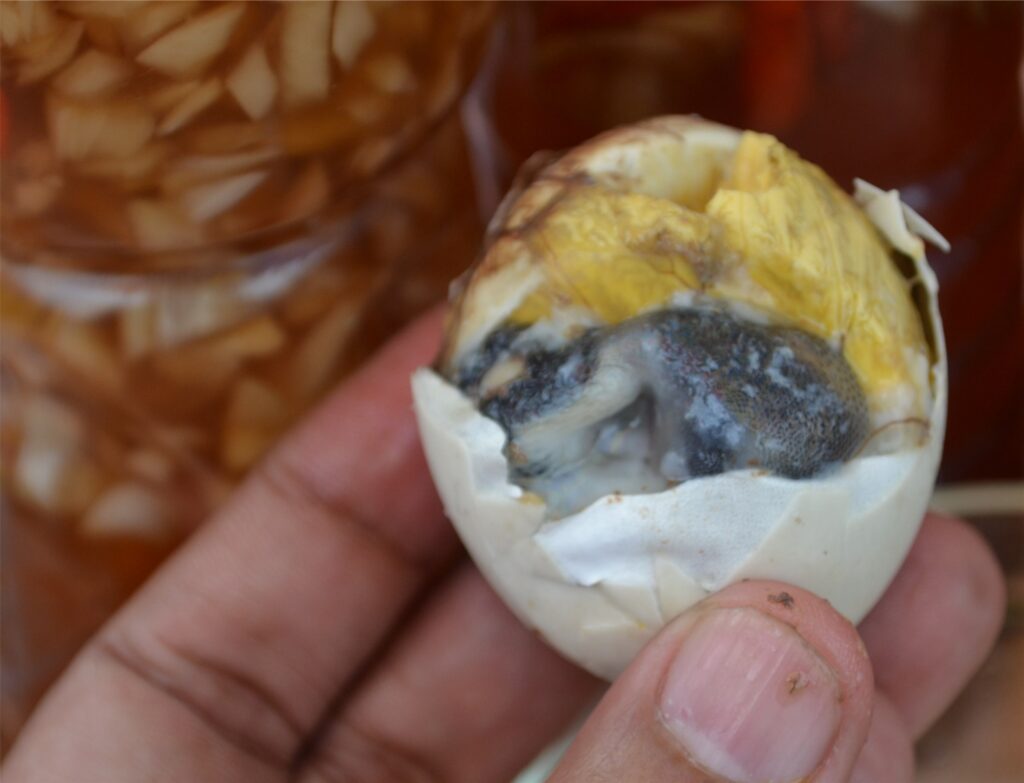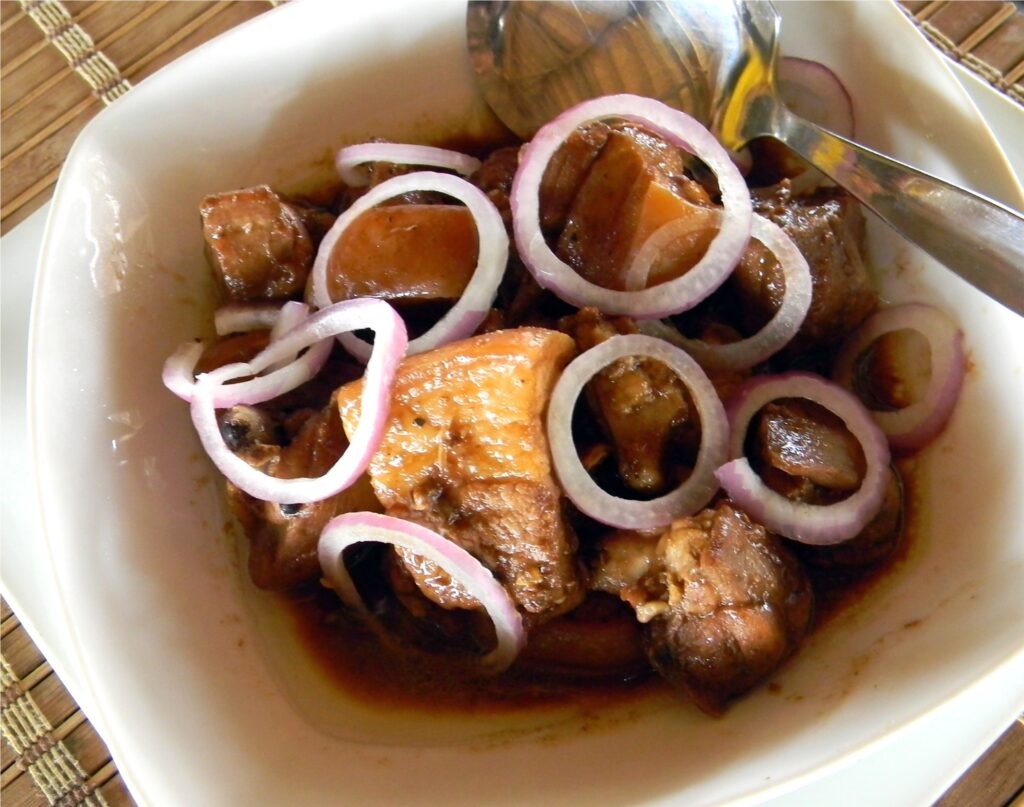Text and Photos by Henrylito D. Tacio
Filipinos love to eat. Aside from breakfast, lunch, and dinner, it also has merienda (snacks) in between those meals. In addition, are those mouth-watering desserts and exotic street foods. To foreigners, what is being served on the table is somewhat mind-boggling.
If foreigners are flabbergasted, they don’t need to worry. As Wikipedia explains, “Filipino cuisine may be confusing to some people due to it being hard to determine what is actually Filipino. Confusion occurs due to the consistent growing phases of Filipino culture. Filipino culture has been constantly changing throughout history, gaining influence from various cultures and inevitably has evolved. Filipino food today has been shaped by the history and society of many unique and affluent cultures.”
Actually, Filipino cuisine is composed of the gastronomies of more than a hundred distinct ethnolinguistic groups found throughout the Philippine archipelago. However, a majority of mainstream Filipino dishes that compose Filipino cuisine are from the cuisines of the various ethnolinguistic groups and tribes of the archipelago, including the Ilocano, Pangasinan, Kapampangan, Tagalog, Bicolano, Visayan (Cebuano, Hiligaynon, and Waray), Chavacano and Maranao ethnolinguistic groups.
Let’s take a closer look at some of them:
Adobo
The Philippines has no national food, but some believe it should be adobo (either chicken or pork or a combination of both). It has been featured on shows like Top Chef and remains the ultimate test of any Filipino cook’s mettle.
One Filipino food writer wrote: “Aside from the fact that adobo is well-loved by Filipinos, the dish also makes use of many of our local ingredients giving adobo the distinct Filipino flavor. We can give credit to the pure cane vinegar for the adobo’s rich sour taste and to the locally-produced soy sauce for its savory and salty feel.”
In an exclusive interview with CNN Philippines, Nancy Reyes-Lumen agreed to have adobo as the official national food “because it is easy to prepare, with many different varieties — from the choice of meat down to the sauce base.” As the chef, television host, author, and self-proclaimed “Adobo Queen” stressed: “That makes adobo so Pinoy in character.”
Foreigners who have not tried adobo yet, the words of Yan Susanto, an occasional online writer, is an eye-opener: “The flavor of this exquisite cuisine will certainly be liked by anyone who has tasted it the first time; they will even be asking for more after the first bite. The spicy flavor of the tenderized chicken and/or pork is so irresistible and the aroma will soothe your sense of smell and tease your taste buds.”
Generally, adobo is eaten with rice, the staple food of the Filipinos. Foreigners, however, eat adobo because of its taste. One good thing is that most hotels in the country serve adobo during breakfast.
Lechon
Lechon is a popular food in Spain, Cuba, Puerto Rico, the Dominican Republic, and other Spanish-speaking nations in Latin America. To these countries, Lechon refers to a roasted baby pig which is still fed by suckling its mother’s milk.
In the Philippines, Lechon is the term used for roasted pigs, usually adults. Unofficially, it is the country’s national dish, with Cebu being asserted by American chef Anthony Bourdain as having the best lechon.
“Despite the Spanish name, the lechon is not necessarily of Spanish origin,” writes Sharwin Tee, author of Lechon in the Philippines: A Guide to Filipinos’ Favorite Roasted Pig and More. Many food historians and chefs believe that prior to the Spanish colonization of the Philippines, pigs and wild boar were already being spit-roasted over an open flame, a technique that Filipinos refer to as inasal.”

Balut 
Adobo 
Lechon
The Philippines’ lechon is known for its skin. The perfect lechon skin is cooked evenly and remains smooth and shiny. The best ones feature skin that remains crisp for several hours! Generally, lechon is served with plum or other sauces, vinegar, or with seasonings or accompaniments.
Sinigang
This is touted to be the world’s best vegetable soup, according to Taste Atlas, an online encyclopedia of food and flavors around the world. With a rating of 4.8 out of 5, sinigang has bested 161 other dishes from other countries.
“Sinigang is a sour Filipino soup consisting of sampalok (fruits of the tamarind tree), water spinach (kangkong), green pepper, cabbage, broccoli, eggplant, diced tomatoes, sliced onions, ginger, green beans, water and salt. The basic broth usually consists of rice washing, with the addition of a souring agent,” wrote Taste Atlas.
“With its sour lightness perfectly matching the harsh tropical heat of the country, sinigang is a unique soup that is a true representative of Filipino cuisine,” the online encyclopedia hailed.
Generally, sinigang uses pork as the main ingredient. Beef, shrimp, and fish are also commonly used to cook sinigang. The chicken version, on the other hand, is called sinampalukang manok.
Aside from sampalok, other souring ingredients may come from guava, tomato, green mango, pineapple, and santol.
Sisig
This is another truly Filipino dish. It is made from parts of a pig’s face, and belly, and chicken liver and is usually seasoned with calamansi, onions, and hot peppers. But it was not so originally.
In tagalog-dictionary.com, author Elmer Nocheseda wrote: “Sisig was one of the first Kapampangan words explained to Spanish missionaries by the Augustinian priest, Fray Alvaro de Benavente. He published it in his book, Arte de Lengua Pampanga in 1699.”
He referred to “sisig” as a manner of preparing food, as in cooking with vinegar or making a salad.
In Vocabulario de Pampango en Romance, y Diccionario de Romance en Pampango (1732), author Fray Diego Bergaño referred to sisig as chara or achara, which has another Kapampangan word equivalent, which is daloc that is to marinate in salt, vinegar, and pepper.
“Therefore, the sisig known to the ancient Kapampangan, is the achara or mixed salad greens without meat or otherwise sour green raw fruits or vegetables that were soaked and marinated in vinegar with garlic, salt and pepper,” Nocheseda wrote.
Over time, the sisig has changed in form, substance, and preparation. From being a side dish like the cold achara dip or plain salad, it is now the smoking hot main dish featured on the dining table.
Lucia Cunanan of Angeles City started the trend; in fact, her restaurant is even known as the “Sisig Capital of the Philippines.” But it was Benedict Pamintuan who used a sizzling plate as a serving vessel so that the pork fat would not go cold and turn into lard when it was served.
These days, sisig is one of the most well-known appetizers or pulutan. “If you’ve never had this divine mosaic of pig parts, chopped and served sizzling and crisp on one side on a screaming hot platter, then you’ve yet to have one of the world’s best beer drinking dishes,” said Anthony Michael Bourdain, a noted American celebrity chef, author, and travel documentarian.
Balut
Each country is known for its exotic food. The Philippines has balut, a hard-boiled duck egg that’s about two to three weeks into development.
“This food is the defining factor of all exotic foods in the country,” an American commented. “It has made the Philippines unique from all of the countries in the world. Hopefully, in the future, the world will be ready for it and that the Philippines will make it an international phenomenon.”
Balut has been the “shocking” topic of some television shows because of its taboo nature in some Western cultures. In two episodes of Survivor: Palau and two episodes of Survivor: China, separate challenges featured attempts to eat this fertilized egg. Similarly, Fear Factor frequently uses balut as a means of disgusting contestants.
Named after the Filipino term which means “wrapped,” balut has been touted as an aphrodisiac as it boosts libido. Studies have shown balut contains 12.6 grams of protein, 181 calories, and good sources of Vitamin B1 and B2, minerals, niacin, beta carotene, and other supplements.
Balut is common on street drinking sessions and just chatting with friends late at night. Oftentimes, balut is being sold mostly when the street lights are on by vendors in baskets covered with thick foams and cloths to keep them warm.
Generally, balut is eaten with a pinch of salt, though some balut-eaters prefer chili and vinegar to complement their egg. The egg is savored for its balance of texture and flavor; the broth surrounding the embryo is sipped from the egg before the shell is peeled, and the yolk and young chick inside can be eaten. All of the contents of the egg are consumed.
Halo-halo
For dessert, foreigners can try halo-halo, which is included in an American website’s list of “10 food fads worth traveling for.” Christine Sarkis, the author of the article, wrote: “In its native Philippines, halo-halo (pronounced hah-low rather than hay-low) isn’t a mere passing fad, it’s a classic summer treat.”
A couple of years ago, the Cable News Network (CNN) also handpicked halo-halo as among the “top 25 summer delicious foods” in the United States.
“In some countries, the coldest, sweetest dishes are considered the best foods for summer,” wrote Elizabeth Leigh, author of the CNN report. “In others, the hottest – in both senses of the word – are considered the best way to beat the heat.”
The popular Black-Eyed Peas make a reference to halo-halo in their song, “Mare.” Video game Dead or Alive 4 secret character Nicole lists the delectable dessert as her favorite.
Literally translated, halo-halo means “mix mix” in Tagalog. It is often used as a metaphor for the country’s own distinctive mixture of East and West. You can see these cross-influences in the dessert itself, a mélange of ingredients served in a tall, clear glass and eaten with a long spoon.
Halo-halo is a representative of the various sweets Filipinos enjoy. Legumes, root crops, and fruits are cooked in syrup until tender and sweet. Egg yolks and milk are made into “leche” flan. Ube is grated for “haleya.” Fresh ripe fruits are cubed, “pinipig” is toasted, “buko” is grated, and if one has time – “sorbetes” or ice cream can even be made. All these are put in a tall glass that is then filled with shaved ice. Sweet, cool, and decadently nutritious, halo-halo is a filling tribute at the end of a satisfying meal.
Although it may be enjoyed throughout the year, halo-halo is most popular during the summer months, particularly from March through July. The concoction is usually served in tall dessert or parfait glasses, but it can also be served in a shallow bowl.

